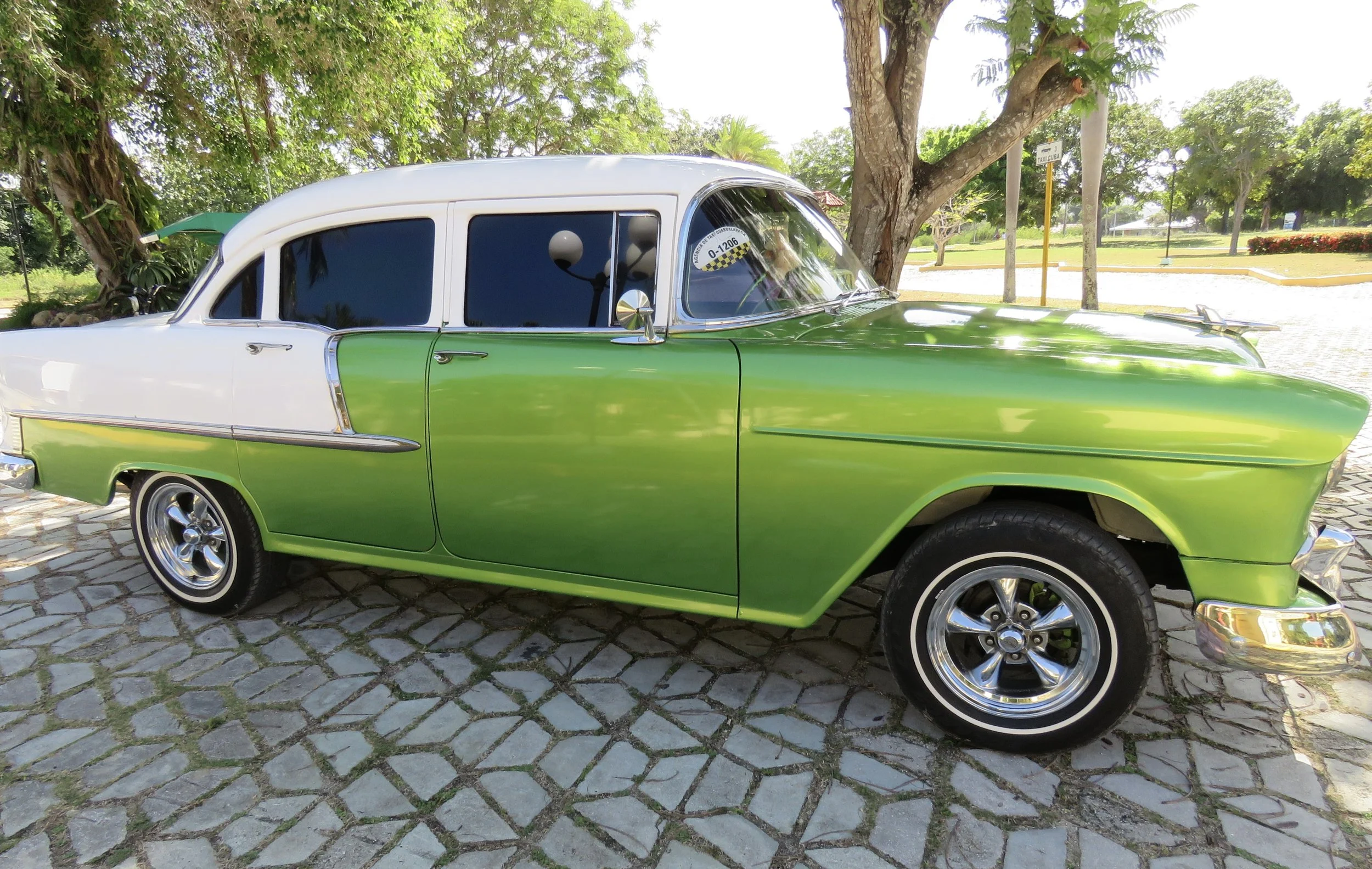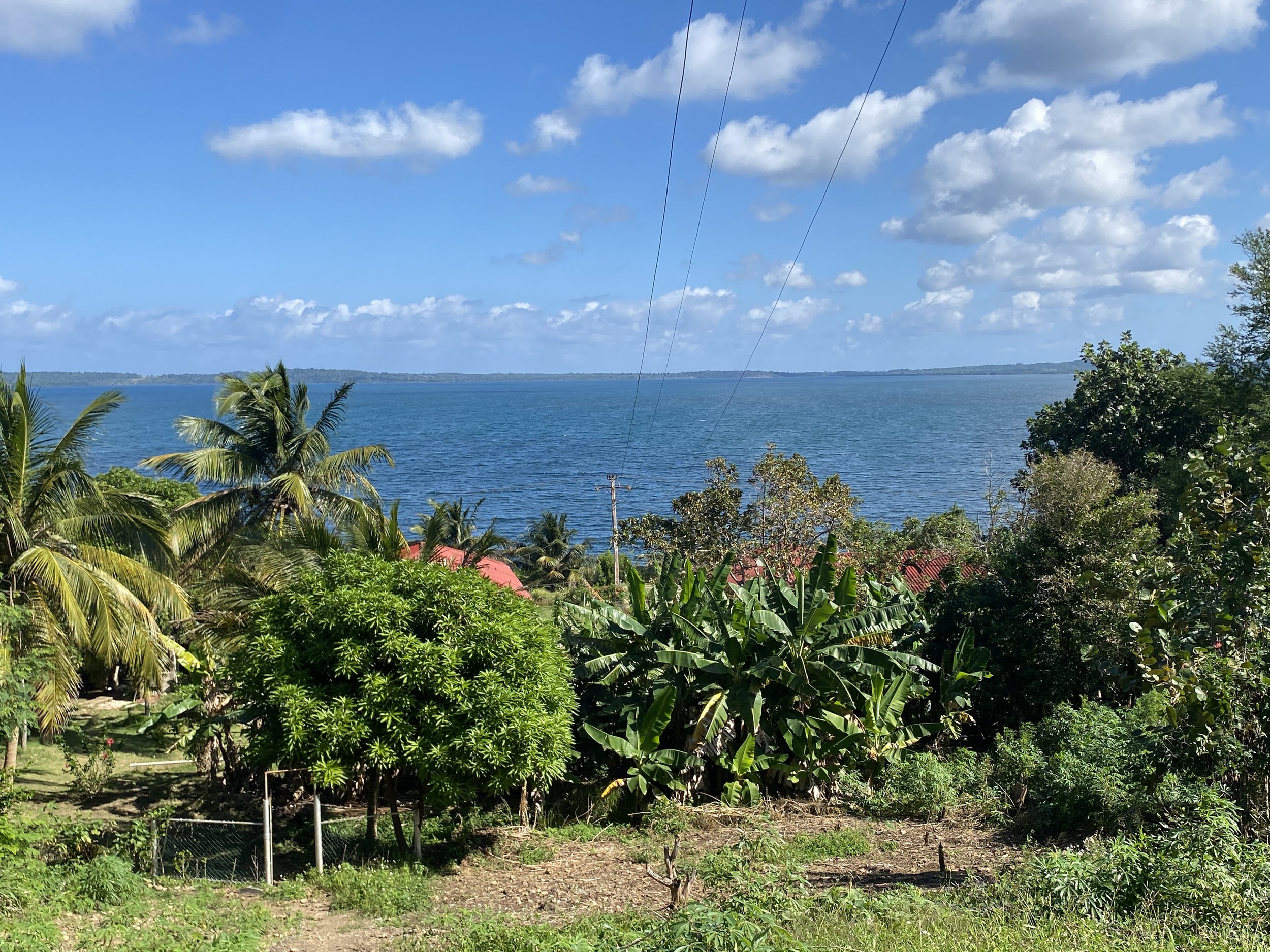What did we know about Cuba? Not much except that there are beautiful beaches and old cars. It’s communistic and the US embargo has isolated the country.
What made us decide to go to Cuba? We don’t like winters, even on our “tropical” island. We love palm trees and beaches. We like to explore places we’ve never been to. It seemed inexpensive so that we could stay longer. And the flights to get there were not nearly as long as going to Malaysia…
So when we decided to spend two months in Cuba, we thought it was a good decision. We searched for a place to stay and found a great house on AirBnB. It looked modern and nice with a great view and even had its own pool. We studied the area, on the north east coast of Cuba, on Google Maps and asked the owner lots of questions. And then we booked it and got excited about spending the winter in a new place…
To travel from Canada’s west coast to Cuba there is not much choice in airlines. Air Transat flies to Holguin from Toronto. It’s only a 3 hour flight. To get to Toronto took longer than that. We landed just after dark. Walking outside the terminal into warm, muggy air with palmtrees silhouetted against the evening sky, I felt we walked into a movie scene. Rows of shiny antique cars waited for passengers - incredible, and colourful, ‘boats’ from the ’50’s and 60’s with shiny chrome hubcaps glimmered in the dark. One of them took us to our B&B for the night.
Holguin morning traffic
In the morning, we enjoyed a big breakfast and then sat on the porch watching traffic: people walked to work and rode mopeds, bicycles, ricksaws, horse carts and a variety of old cars. One of those, a bright red and white shiny car, picked us up and drove us for an hour and a half to the small town of Nicaro. We didn’t have eyes enough to take it all in - sugarcane fields lined the pot holed road. We passed countless horse and buddies, which seemed to be the main mode of transportation. Sometime single cowboys, wear a straw sombrero, rode a skinny horse. Cuba seemed like a setting for an old-fashioned western movie.
We passed hovels with tins roofs and endless ranches. Children walked along the road to school. An old man led a bunch of goats to greener pastures. And on every intersection large groups of people waited, mostly in vain, for a bus or car to pick them up.
Nicaro looked like a neglected, Soviet town with crumbling apartment building and mostly unpaved roads. But our house along the bay was much as the photos as shown it to be. Except there was no promised wifi. There was also no beach despite the beautiful view over the water of Bahia de Levisa.
Room with a view.
The caretakers lived next door and couldn’t have been nicer. Sweet, kind people who had agreed to make us three meals a day for a small cost. We had been told that there are many power outages in Cuba. Power abruptly quit many times a day with no idea of when it would be back. There was a generator but someone had to come to turn it on each time. And it only allowed for a few lights - no fridge, no stove, no warm water, even no cell phone reception during the frequent power outages.
I was glad I have a book in Spanish to donate to the local school!
We soon realized just how primitive, and difficult, life in Cuba is. The only stores in Nicaro were two government stores. They offered a few items: toiletpaper, toothpaste, coffee, some biscuits and juice in one store. The other had toiletpaper, toothpaste, cans of tuna and sometimes applesauce for sale. Creditcards only, plus they take all of your vital information before you can even pay, credit card only.
At night, a lady walked down our road calling out ‘bread for sale!’. Our caretakers bought us a little bun for breakfast and lunch. But she did not show up every day. There was not much to put on the bread so I put any fruit we could find in the blender to make my own jam. We had to boil all water before we could drink it, but often didn’t have power long enough to do so. Life in Cuba was turning out to be a challenge.
Nicaro traffic.
Even the weather was against us - of course, it was warmer than Canada in January. But the Caribbean trade winds were relentless this year, forcing us to stay inside much of the time. It rained buckets and buckets until mid February when the weather lightened up.
One chickenleg for us, one for a family of 5.
Each night at 6 o’clock, our caretakers knocked in the door to hand us a tupperware container with rice and beans and a piece of meat. They tried their very best but we soon learned that there is very little food in Cuba. Kids are skinny as a rail. Some people grow a few vegetables or have fruit trees. Many seemed to trade or buy/sell on the black market. It took days to find a few bananas, mangoes were not in season but we were given a few. We ate yucca roots and goat meat. But we also started to get hungry.
One day we discovered a tiny outdoor restaurant that had both food and wifi! We were happy, even if we had to pay double for our meals. We were always the only ones there and sat for hours, enjoying a soft drink and fries!
Despite the fact that the country is disfunctional, nature in Cuba is gorgeous and the people are lovely. In our next blogs we’ll take a look at what shaped Cuba, and also visit some beautiful National Parks.
BOOKS about Cuba - scroll to ‘Cuba’.
RESOURCES:
A tiny outdoor restaurant, hidden away in Nicaro.










